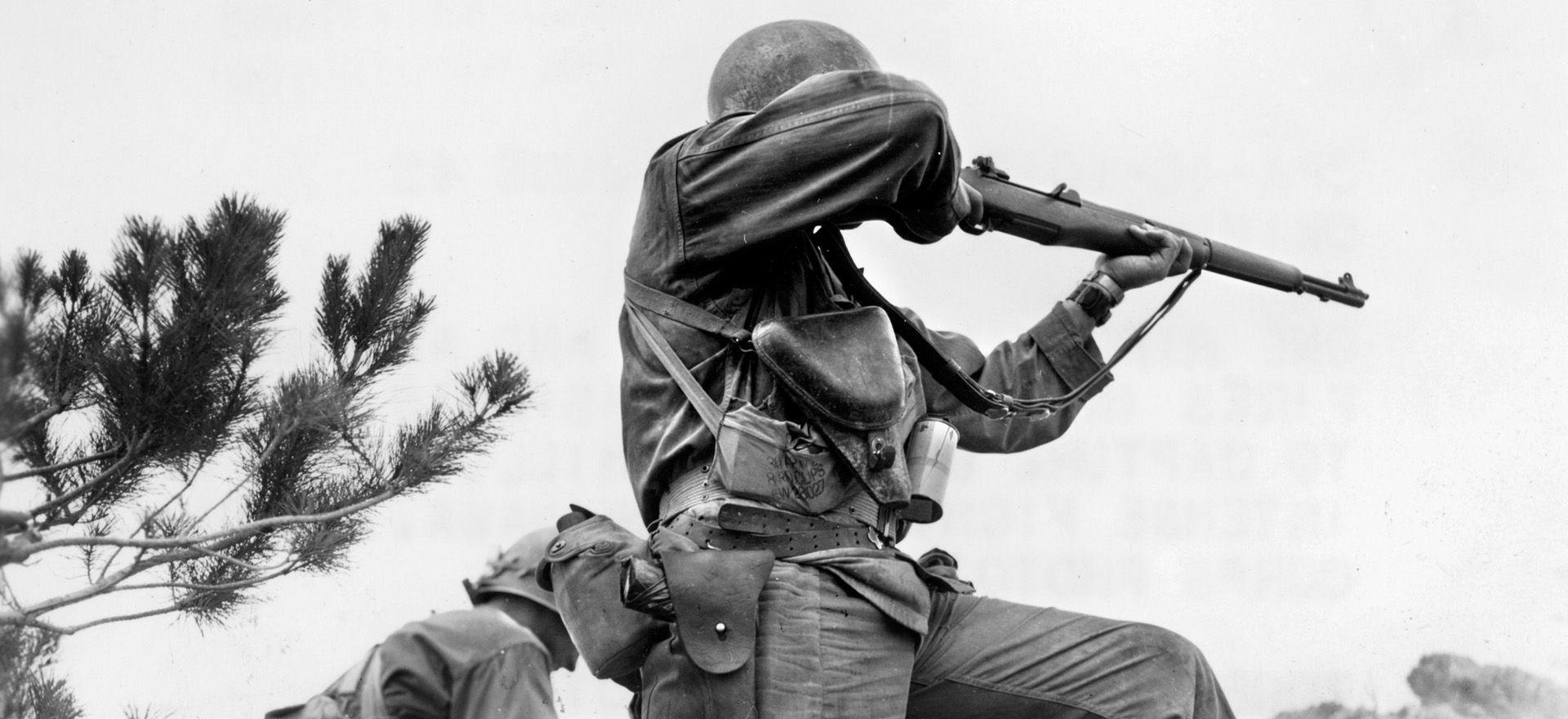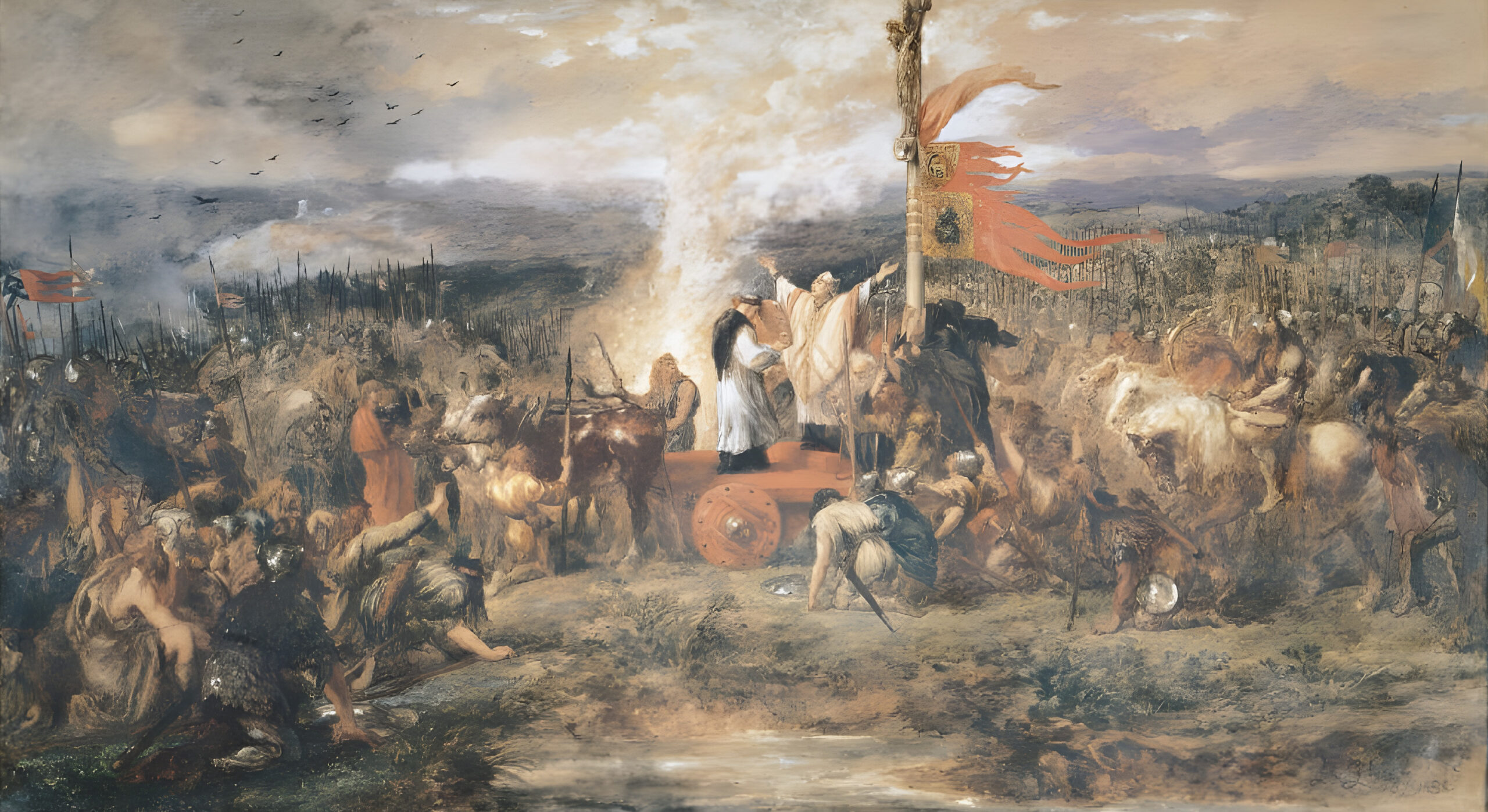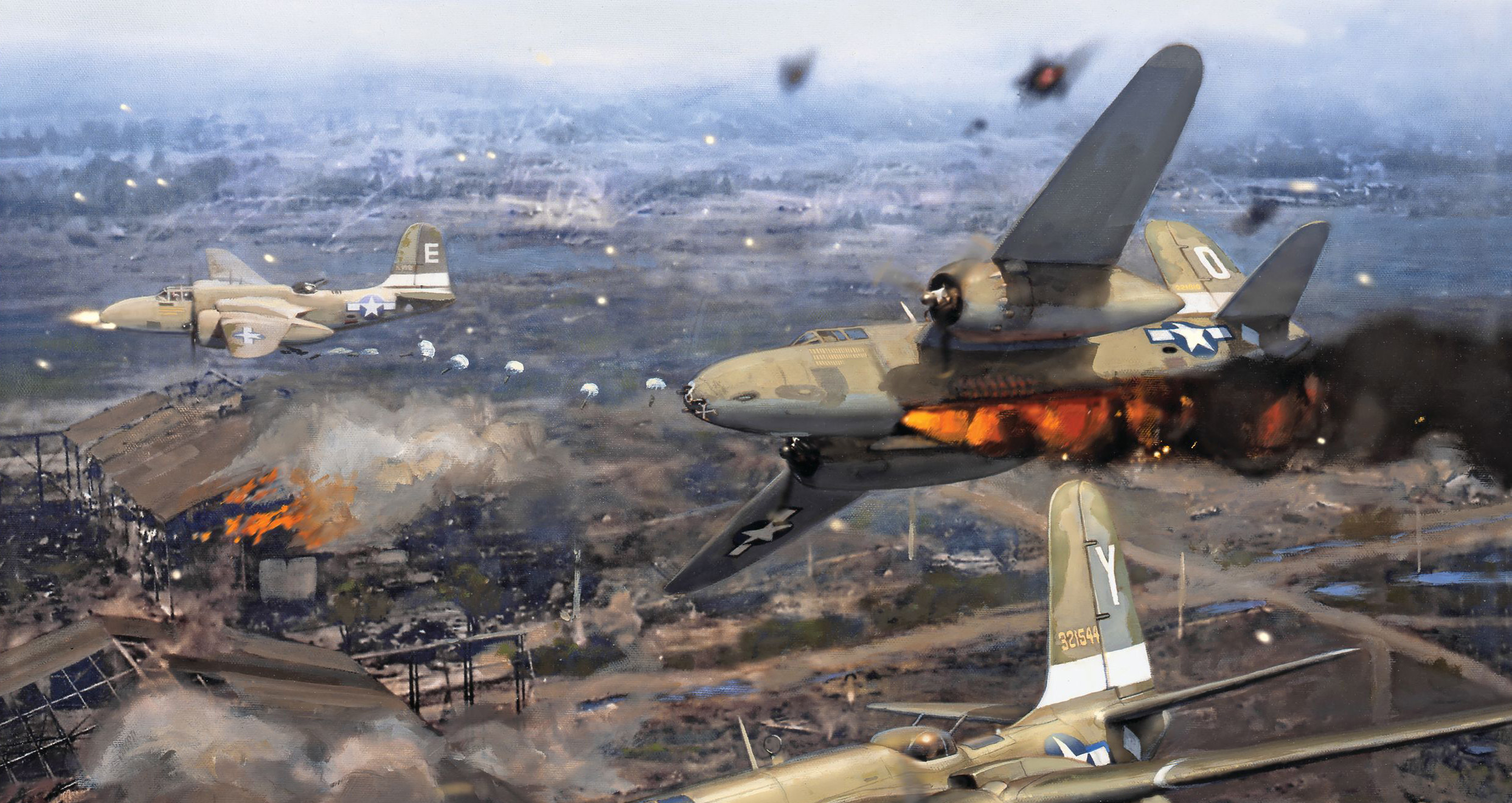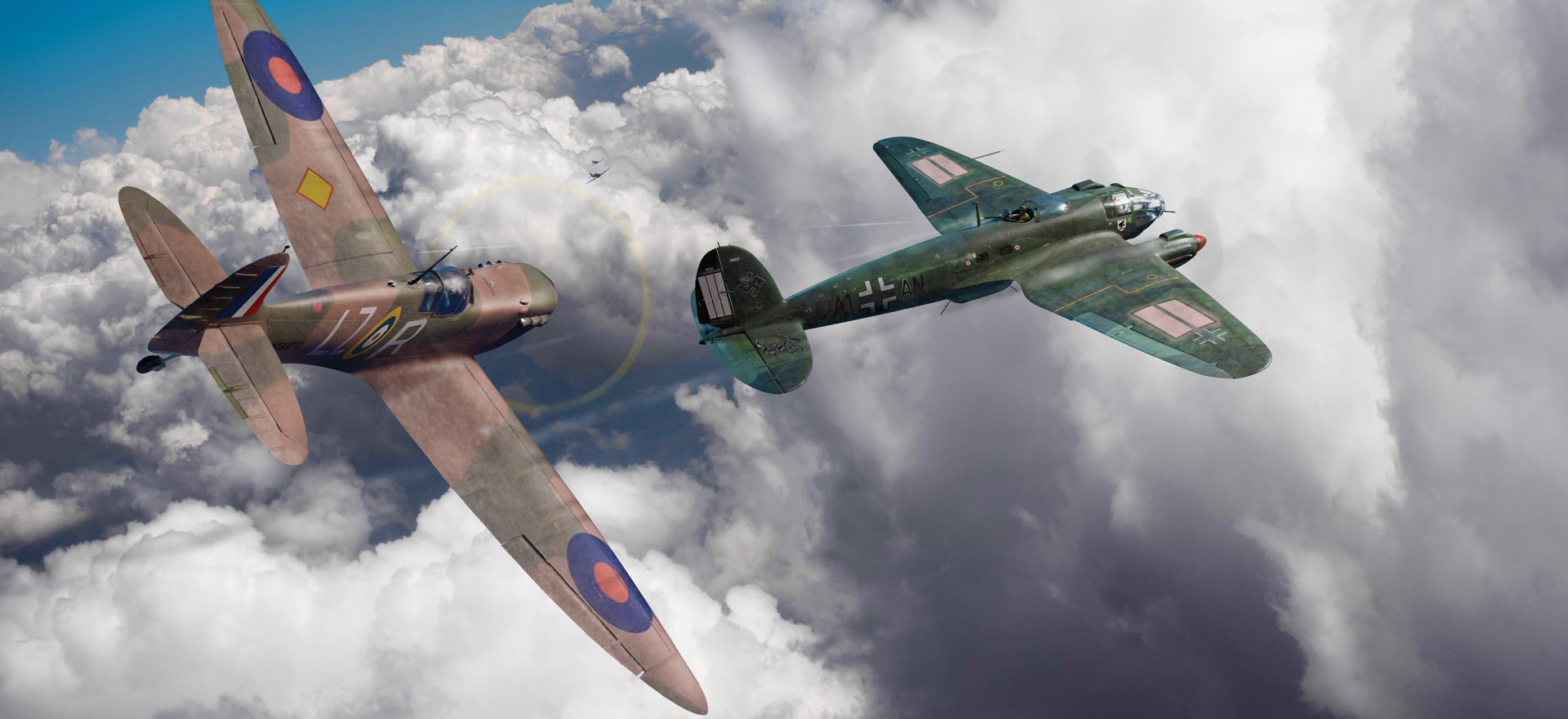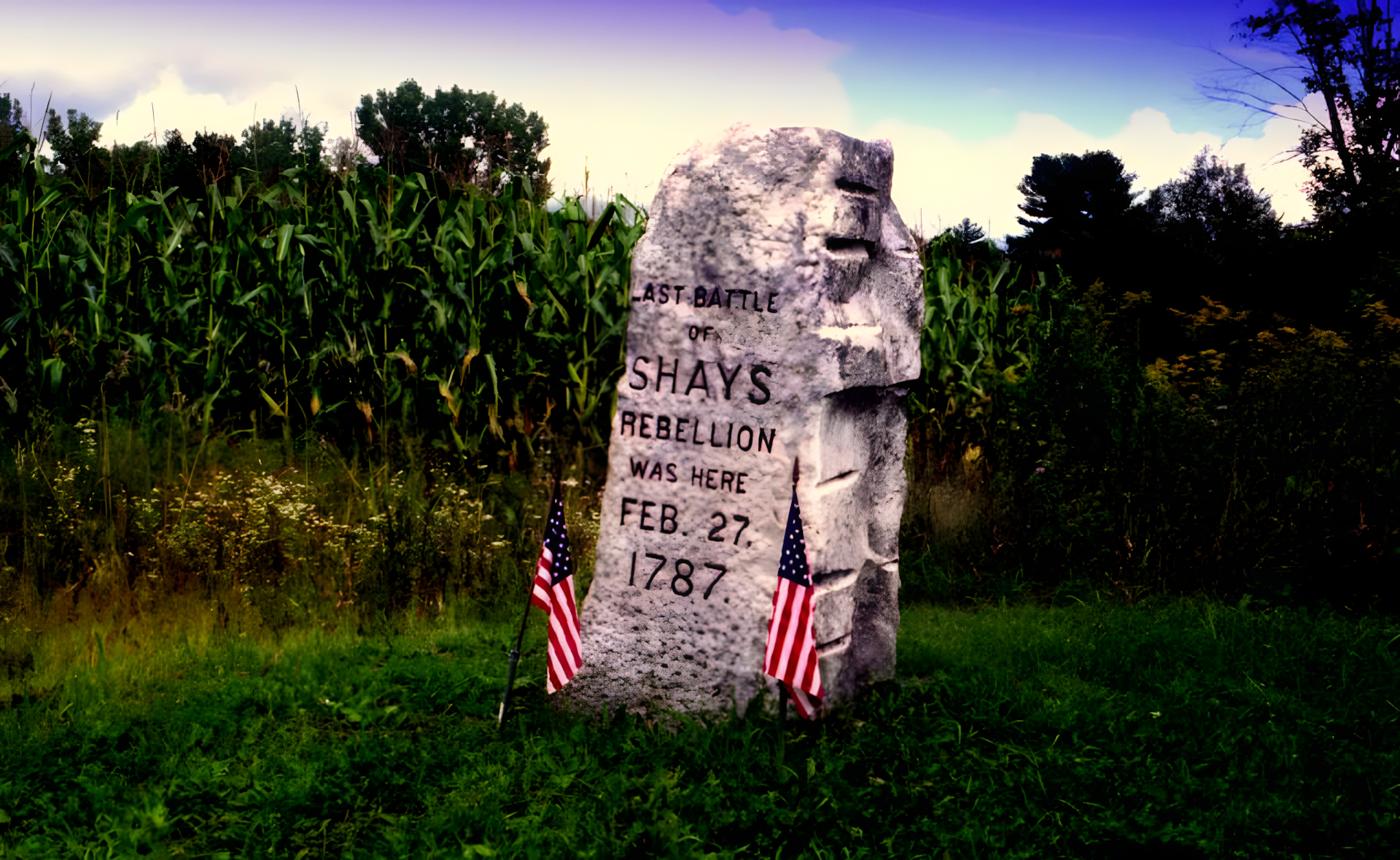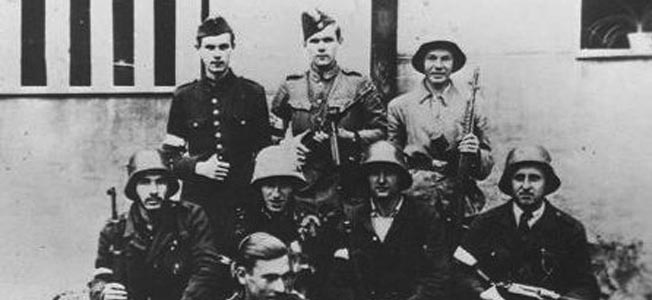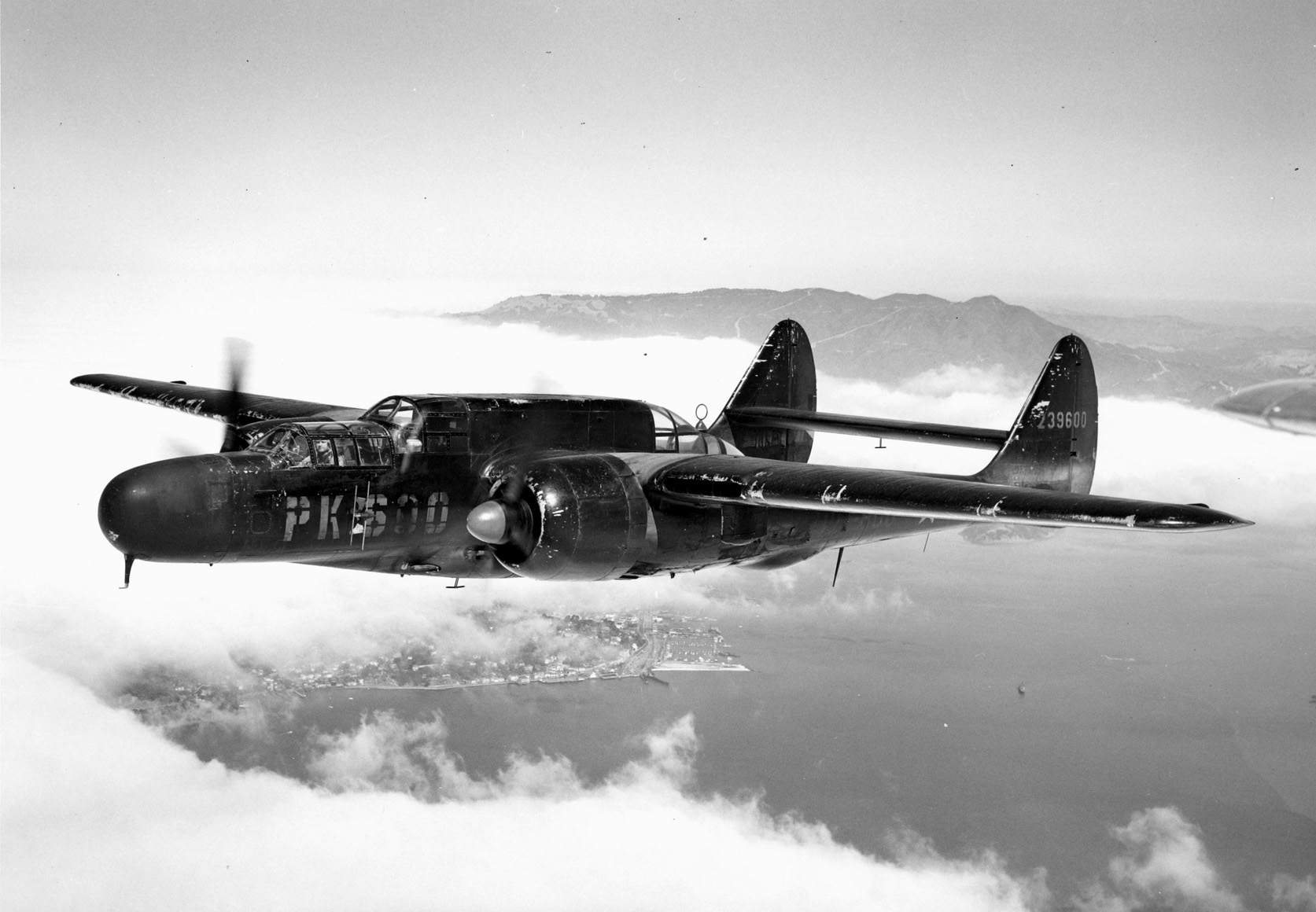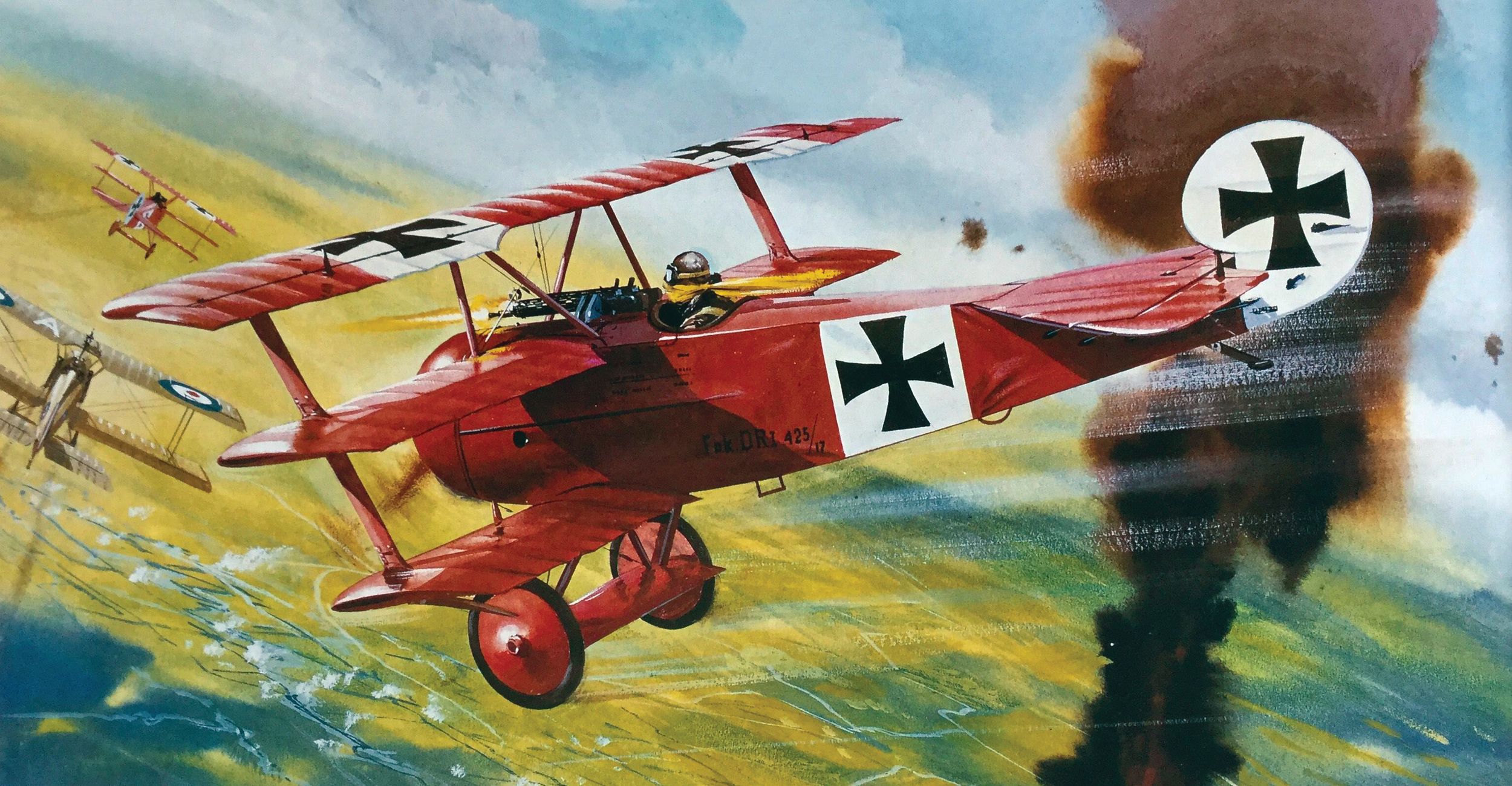By Christopher Miskimon
On April 1, 1945, Major Arthur Shaw leaned against the railing of an attack transport ship and stared into the distance at the island of Okinawa. The place was Japanese territory, with thousands of Japanese troops prepared to defend it to the death. Most of them would do just that. Shaw’s unit, the 361st Field Artillery Battalion, was part of the American 96th Infantry Division, bloodied in the Philippines and now prepared to fight the last great battle of the Pacific War. The unit’s 105mm howitzers would stay close behind the infantry, able to fire so fast “the Japanese thought we had automatic weapons.”
The battalion was scheduled to land just north of Naha, a coastal town near the section of high ground that stretched across the center of the island. Most of the troops were on a nearby Landing Ship, Tank (LST); if the tide was high enough, the ship would carry them right onto the beach. If not, the men would board amphibious trucks, nicknamed “ducks,” for the journey in. Shaw wound up catching a ride ashore with a tank unit commander aboard one of the ducks. He was the first man from the battalion to set foot on the beach that day.
The beachhead was not defended, and the unit got ashore without incident. They emplaced their guns and prepared for the fight ahead. Soon the howitzer crews went into action, supporting the infantry as they advanced. It was bloody work, made worse by the civilians trapped between the opposing sides. One day a man took Shaw to what appeared to be a cave but turned out to be a burial crypt for the locals, five of whom lay dead on the stone floor, their throats cut by the Japanese.
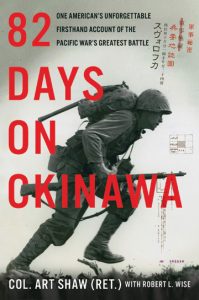 At first the fighting wasn’t bad, though mines and tank traps slowed the advance. Soon, though, it intensified, and Shaw’s guns stayed close behind the front lines, softening targets for the infantry as best they could. The Japanese were well dug in; sometimes the artillery had an effect, sometimes not. It was clear the enemy was prepared to fight it out until the end, however, and Shaw warned his men they were in for the long haul. Victory was the only way off the island, short of death or a serious wound. They shelled the Japanese all day and posted sentries at night to watch for infiltrators, men with swords and satchel charges looking to take out vital targets like an artillery piece or headquarters tent. The battle was on, and would remain so for 82 days.
At first the fighting wasn’t bad, though mines and tank traps slowed the advance. Soon, though, it intensified, and Shaw’s guns stayed close behind the front lines, softening targets for the infantry as best they could. The Japanese were well dug in; sometimes the artillery had an effect, sometimes not. It was clear the enemy was prepared to fight it out until the end, however, and Shaw warned his men they were in for the long haul. Victory was the only way off the island, short of death or a serious wound. They shelled the Japanese all day and posted sentries at night to watch for infiltrators, men with swords and satchel charges looking to take out vital targets like an artillery piece or headquarters tent. The battle was on, and would remain so for 82 days.
Over 150,000 soldiers, Japanese and American, died during the fighting on Okinawa, and Shaw writes that everyone who survived knew they were lucky to be alive afterward. His book 82 Days on Okinawa: One American’s Unforgettable Firsthand Account of the Pacific War’s Greatest Battle (Col. Art Shaw (Ret.) with Robert Wise, William Morrow Publishers, New York, NY, 2020, 368 pp., maps, photographs, index, $28.99, hardcover) is a gripping narrative of that experience.
Shaw relates the actions of his men and the infantrymen they supported in simple, readable prose, allowing the reader a close understanding of what the troops on the front lines endured. His detailed accounts lay out the bravery and suffering of the American soldiers slogging their way across Okinawa during three months of brutal combat. The intense fighting hinted at what was to come in the months ahead, when the Japanese home islands were to be invaded. The idea seemed almost a death sentence, and when the American troops learned of the Japanese surrender after the dropping of the atomic bombs, they were ecstatic, cheering and firing their rifles into the air. It was as though they had received a last-minute reprieve from the gallows.
Colonel Art Shaw was there for all of it. As time goes on, few veterans of World War II remain to tell their stories. As new, un-republished veteran accounts become ever scarcer, this new book provides a fresh retelling of a famous battle in great detail. Shaw fought this battle at 25 years old; at 99, he is now telling his remarkable part of it.
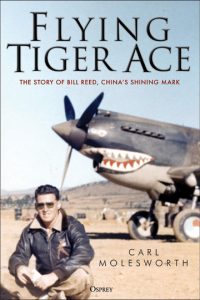 Flying Tiger Ace: The Story of Bill Reed, China’s Shining Mark (Carl Moles-worth, Osprey Publishing, Oxford, UK, 2020, 335 pp., maps, photographs, appendix, notes, index, $35.00, hardcover)
Flying Tiger Ace: The Story of Bill Reed, China’s Shining Mark (Carl Moles-worth, Osprey Publishing, Oxford, UK, 2020, 335 pp., maps, photographs, appendix, notes, index, $35.00, hardcover)
Bill Reed grew up in Iowa during the Great Depression; it was a hard time, which forged hard young men. He joined the U.S. Army Air Corps, but the call for action drew him to resign his commission when World War II broke out.
Bill chose to sign on with the American Volunteer Group, an organization that would quickly earn that immortal sobriquet, “The Flying Tigers.” He flew 75 missions against the Japanese before returning home after the United States entered the war.
Reed spent some time there selling war bonds before returning to China to continue the fight, this time with the Chinese-American Composite Wing. This joint unit fought during the final two years of the war. Tragically, Bill Reed died during a parachute jump on December 19, 1944. At the time, he had nine confirmed aerial victories to his credit. His obituary covered the front pages of newspapers across Iowa.
This new biography began with information gathered from veteran’s reunions of the Chinese and American pilots and was expanded into a thorough retelling of Bill Reed’s life. The author was impressed by the respect and affection Bill’s comrades held for him even decades later and wrote this book in response. Reed’s family also donated records, and the book is well-illustrated with rarely seen photographs.
 The Pacific War Remembered: An Oral History Collection (John T. Mason Jr., Naval Institute Press, Annapolis, MD, 2020, 373 pp., maps, photographs, appendix, bibliography, $34.95, hardcover)
The Pacific War Remembered: An Oral History Collection (John T. Mason Jr., Naval Institute Press, Annapolis, MD, 2020, 373 pp., maps, photographs, appendix, bibliography, $34.95, hardcover)
Donald B. Duncan helped plan the Doolittle Raid, using Army bombers to take off from a Navy aircraft carrier. Henry L. Miller helped train the Army pilots to take off from a carrier’s pitching, swaying deck. Joseph Worthington commanded the destroyer Benham during operations at Guadalcanal and Midway. Meanwhile, William A. Read took part in the operation to shoot down Japanese Admiral Isoroku Yamamoto. The submarine service saw Lawson Ramage on war patrols in several subs. At Saipan, Draper Kaufman commanded the Underwater Demolition Team that helped pave the way for the amphibious assault. Finally, at the war’s end, Stuart S. Murray commanded the battleship USS Missouri when she sailed into Tokyo Bay for the surrender ceremony that ended World War II. Each of these men made a small contribution, each just one among many, that together with the efforts of millions of other Americans resulted in victory in the Pacific.
The author gathered the statements of 33 participants of the Pacific War and compiled them into this fascinating book. All of them eventually rose to flag rank in the naval service, but as more junior officers they took part in history’s greatest conflict. They represent a wide variety of experiences both on and under the sea, as well as in the air. Some are combat stories, while others delve into the staff work and logistical efforts that make modern warfare possible. This book provides valuable insight into the conduct of the war in the words of those who were there.
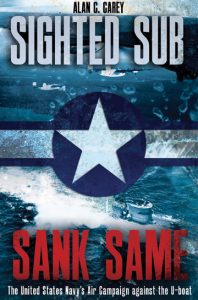 Sighted Sub, Sank Same: The United States Navy’s Air Campaign Against the U-Boat (Alan C. Carey, Casemate Publishers, Havertown, PA, 2020, 240 pp., maps, photographs, appendices, notes, bibliography, index, $34.95, hardcover)
Sighted Sub, Sank Same: The United States Navy’s Air Campaign Against the U-Boat (Alan C. Carey, Casemate Publishers, Havertown, PA, 2020, 240 pp., maps, photographs, appendices, notes, bibliography, index, $34.95, hardcover)
The Battle of the Atlantic pitted the Allied navies against the might of Nazi Germany’s U-Boat arm. It was an economic war, aimed at denying the United Kingdom needed supplies and hindering Allied efforts to build up a force able to carry the war onto the European mainland. The U.S. Navy did its part in this campaign. Of the 783 submarines lost by Germany, American aircraft sank 159 of them. Of that number, 83 were lost to carrier-based planes.
The author has pulled together a wide variety of sources to create this book, resulting in a detailed and thorough retelling. It is richly illustrated and tells the stories of action in the Atlantic, Caribbean, and Mediterranean. There is even a story of a Japanese submarine sunk during a transport mission to its Axis partner.
 The Stuff of Soldiers: A History of the Red Army in World War II Through Objects (Brandon M. Schechter, Cornell University Press, Ithaca, NY, 2019, 315 pp., photographs, notes, bibliography, index, $36.95, hardcover)
The Stuff of Soldiers: A History of the Red Army in World War II Through Objects (Brandon M. Schechter, Cornell University Press, Ithaca, NY, 2019, 315 pp., photographs, notes, bibliography, index, $36.95, hardcover)
“All of our things are government issue, we put our own stuff into storage.” Nikolai Chekhovich wrote this line in a letter to his mother on June 27, 1941. He wanted her to know the Army would ship his things home to her soon and didn’t want her thinking he was dead. Nikolai would continue writing to his family until he died liberating an unnamed village in 1944. Like all soldiers, he carried a weapon, but that was not all. He had an entrenching tool to dig, a knapsack to carry his meager possessions, a spoon, an ammunition pouch, and a coat which often served as his blanket. If he was lucky, he might also have some rations and maybe a little alcohol tucked away for the right moment. These, and a few other issued items, were all he had to help him through daily life, alongside whatever he could scrounge.
The things Soviet soldiers carried during the war are laid out in detail in this new book. It also delves into how the ethnic diversity of the troops contributed to their circumstances, the ways women dealt with life at the front and how looting formed a part of the soldier’s existence. The author argues even mundane items were important to the war effort.
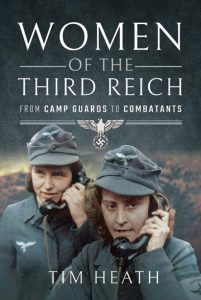 Women of the Third Reich: From Camp Guards to Combatants (Tim Heath, Pen and Sword Books, South Yorkshire, UK, 2019, photographs, bibliography, $32.95, hardcover)
Women of the Third Reich: From Camp Guards to Combatants (Tim Heath, Pen and Sword Books, South Yorkshire, UK, 2019, photographs, bibliography, $32.95, hardcover)
Women were assigned many roles within Nazi Germany. In the beginning of the regime those roles might generally fit neatly within the social norms and biases of the era. They were expected to be good wives and mothers, providing for the future of the Third Reich through the raising of large families and support of their husbands. Girls were indoctrinated through various programs similar to the Hitler Youth organization. Once the war started, though, and especially as it turned against Germany, women’s roles expanded, much as they did in other nations. They were trained to operate telephone networks, use radar systems, and drive trucks. Some fought fires as their cities became the targets of bombing raids. Others operated antiaircraft guns. Infamously, a few worked in the concentration and death camps, where they became notorious for their cruelty. In the end, they were often pressed into service as militia when the Allied armies arrived in the Fatherland.
Full of testimonials from women who were there, this new work delves into the various roles and experiences of women in Nazi Germany. The author gathered the statements of women who were but tiny cogs in the state’s apparatus, as well as more famous figures such as Traudl Junge, Hitler’s secretary. He does not shy away from the brutality of the period nor make excuses, seeking to reveal how his subjects viewed their world at the time and how they came to see things as that world changed and eventually crashed down around them.
 Dogfight over Tokyo: The Final Air Battle of the Pacific and the Last Four Men to Die in World War II (John Wukovits, Da Capo Press, Boston, MA, 2019, 322 pp., photographs, notes, bibliography, index, $28.00, hardcover)
Dogfight over Tokyo: The Final Air Battle of the Pacific and the Last Four Men to Die in World War II (John Wukovits, Da Capo Press, Boston, MA, 2019, 322 pp., photographs, notes, bibliography, index, $28.00, hardcover)
In the early morning of August 15, 1945, a group of American fighter pilots of Air Group 88 rose from the wooden flight deck of the aircraft carrier USS Yorktown (CV-10) and flew toward the island nation of Japan. Their mission, though they could not know it, would be the last of World War II. Two hours into the attack, word arrived of the Japanese surrender, along with an order to cease all offensive operations. As the American flyers turned back for their ship, a flight of 20 Japanese planes jumped them from above, the beginning of a fierce dogfight. When it was over, four U.S. pilots were lost, having started their day at war but ending it technically at peace. They lost their lives despite this fact, in the last action of a war already over. Some of the men blamed Admiral William F. Halsey for the situation. Despite this, Halsey urged that the memory of these last four casualties of the war be remembered.
The author of this book is an acknowledged expert on the Pacific War and specializes in telling the stories of fighting men caught up in the terrible combat action that characterized that conflict. This work continues his tradition of dramatic action, detailed backstory, and thorough research. Gathering information from numerous sources, including the descendants of the pilots of Air Group 88, he creates a page-turning narrative that grips the reader page after page.
 Hunt the Bismarck: The Pursuit of Germany’s Most Famous Battleship (Angus Konstantine, Osprey Publishing, Oxford, UK, 2019, 336 pp., maps, photographs, notes, bibliography, index, $30.00, Hardcover)
Hunt the Bismarck: The Pursuit of Germany’s Most Famous Battleship (Angus Konstantine, Osprey Publishing, Oxford, UK, 2019, 336 pp., maps, photographs, notes, bibliography, index, $30.00, Hardcover)
The Bismarck presented a great threat to Allied shipping and naval power in 1940-41. The battleship was Nazi Germany’s showpiece weapon, armed with 15-inch guns and protected with heavy armor. Even if the ship just sat in port, it represented a potential threat the Allies simply could not ignore. When the vessel eventually went to sea in May 1941, the British Royal Navy went to great efforts to find and destroy her, mobilizing ships and aircraft in concert. The British and Germans met at the Battle of the Denmark Strait, where the famous battlecruiser HMS Hood was destroyed in a massive explosion. This left Bismarck roaming free in the Atlantic, but the ship had suffered damage in the fight that limited her maneuverability. This led to a massive hunt for the Bismarck, which ended in a long-running battle, one of the largest naval engagements in the Atlantic during the war.
The story of the Bismarck is presented here in a fast-paced narrative that utilizes extensive research and numerous firsthand accounts from the participants. The author is a former naval officer and long-acknowledged expert on naval history, with over 80 books to his credit. This vast experience results in a book that is polished, with useful maps linked to the text and clear, easy-to-follow prose.
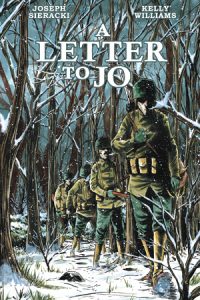 A Letter to Jo (Joseph Sieracki, art by Kelly Williams, Top Shelf Productions, San Diego, CA, 2020, 136 pp., illustrations, appendices, $19.99, softcover)
A Letter to Jo (Joseph Sieracki, art by Kelly Williams, Top Shelf Productions, San Diego, CA, 2020, 136 pp., illustrations, appendices, $19.99, softcover)
Like so many Americans, Leonard Sieracki went to war for his country against Nazi Germany. When he departed, his girlfriend Josephine was left behind to worry and wait. Initially assigned to the Pennsylvania National Guard’s 28th Infantry Division, shortly before the Normandy landings he was transferred to the Regular Army’s 2nd Infantry Division. Leonard was skilled with the machine gun, so his unit assigned one to him: a heavy, .30-caliber Browning he soon nicknamed “Death.” His division moved across Europe, fighting one battle after another. As Leonard saw his friends and comrades killed or wounded, it took a terrible toll upon him, affecting his health and driving him to drink. Eventually, he was wounded in a particularly difficult battle involving enemy tanks and was evacuated to a hospital.
Leonard summarized his war experiences in a letter to Josephine written just after the war ended, containing all the horrors of war, which he had held back from her until then. His grandson Joseph eventually received the later, and this new graphic novel was born. The artwork focuses on the human drama of Leonard’s descriptions and reveals the stress of combat and the fear and suffering it creates. The last few years have seen a surge in graphic novels dealing with military history. This one is innovative in dealing with its subject and is suitable for young adult readers who are mature enough to read and see depictions of warfare.
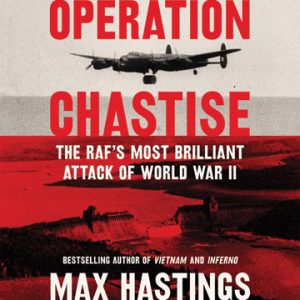 Operation Chastise: The RAF’s Most Brilliant Attack of World War II (Max Hastings, Harper Collins, 2019, $35.00, hardcover) The attacks on German dams by Great Britain’s No. 617 Squadron were among the most daring acts of the war. This book reveals the efforts and bravery of the aircrew and the effects of their actions.
Operation Chastise: The RAF’s Most Brilliant Attack of World War II (Max Hastings, Harper Collins, 2019, $35.00, hardcover) The attacks on German dams by Great Britain’s No. 617 Squadron were among the most daring acts of the war. This book reveals the efforts and bravery of the aircrew and the effects of their actions.
Check Six! A Thunderbolt Pilot’s War Across the Pacific (James C. Curran and Terrence G. Popravak, Jr., Casemate Publishers, 2019, $32.95, hardcover) James “Jug” Curran flew the P-47 fighter in over 200 combat missions. His personal memories are combined with unit records to provide a detailed and authentic work.
Mortar Gunner on the Eastern Front Volume I: From the Moscow Winter Offensive to Operation Zitadelle (Dr. Hans Heinz Rehfeldt, Greenhill Books, 2019, $32.95, hardcover) Dr. Rehfeldt fought in some of the most difficult conditions possible in the brutal war between Germany and the Soviet Union. His memoir brings the horror of the war to light.
The Eighth Army in North Africa (Simon Forty, Pen and Sword Books, 2019, $29.95, softcover) This new volume in the Images of War Series contains numerous photographs of the Eighth Army during the desert war. This force was instrumental in defeating the Afrika Korps.
Air War Over North Africa: USAAF Ascendant (David Mitchelhill-Green, Pen and Sword Books, 2019, $24.95, softcover) The novice U.S. Army Air Forces played a major part in the air campaign over North Africa in 1942-43. This work photographically displays that effort.
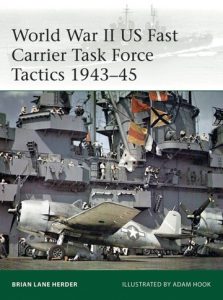 World War II Fast Carrier Task Force Tactics 1943-45 (Brian Lane Herder, Osprey Publishing, 2020, $20.00, softcover) The aircraft carrier quickly eclipsed the battleship as the primary weapon of naval warfare. The author recounts the tactics developed and used by this new sea arm.
World War II Fast Carrier Task Force Tactics 1943-45 (Brian Lane Herder, Osprey Publishing, 2020, $20.00, softcover) The aircraft carrier quickly eclipsed the battleship as the primary weapon of naval warfare. The author recounts the tactics developed and used by this new sea arm.
Battle of Midway: America’s Decisive Strike in the Pacific in WWII (John Grehan, Frontline Books, 2019, $28.95, softcover) Midway was one of the most decisive battles of the war. This book compiles many images of the battle and ships involved.
Audacious Missions of World War II: Daring Acts of Bravery Revealed Through Letters and Documents from the Time (The National Archives, Osprey Publishing, 2020, $35.00, hardcover) This work reveals many intelligence and Special Forces missions undertaken during the war. It is well-illustrated.
USS Arizona: The Enduring Legacy of a Battleship (Ingo Bauernfeind, Bauerfeind Press, 2019, $29.95, hardcover) This volume covers the history of Arizona, from her launching to her loss at Pearl Harbor. It comes with a video download of oral histories by survivors, along with underwater footage of the ship.
